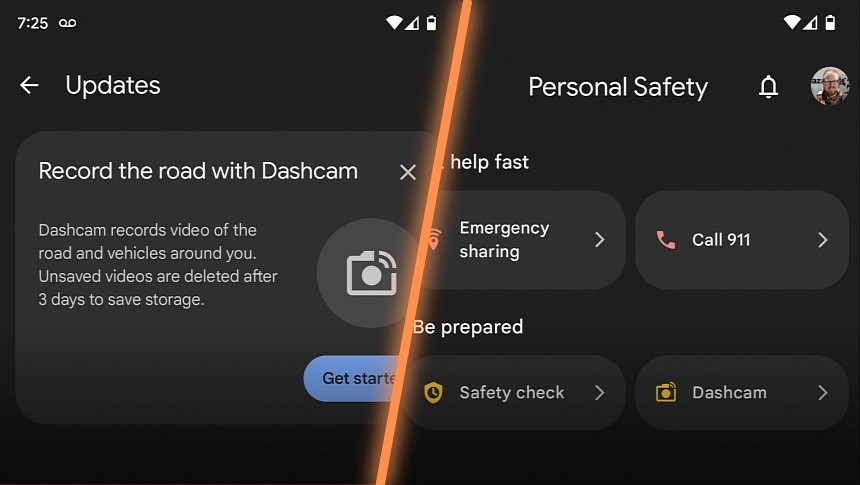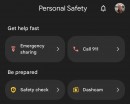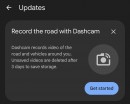Dashcams have become a must-have piece of equipment for the majority of drivers out there, so their sales skyrocketed in the last few years.
The reasons are pretty obvious, but in some cases, having a dashcam in the car could produce extra benefits, such as avoiding certain insurance cost increases. For example, if you're involved in an accident, the dashcam footage can serve as living proof you weren't at fault.
Installing a dashcam is as easy as 1-2-3, as most models are plug-and-play and don't require anything else than a power source. Others even come with a built-in battery, though the longer the journey, the bigger the likelihood of the device needing extra juice. As such, keeping the dashcam plugged in all the time is the right way to go.
A standard dashcam with decent video quality starts at approximately $100, but if you want 4K resolution and night recording, be ready to spend a lot more than that.
Smartphone cameras have evolved a lot in the last few years, and their capabilities are insane. From 100x zoom to a super-wide lens, these cameras can easily double as dashcams, especially because they are almost always installed in the windshield.
As such, recording your drive comes as an added benefit of installing the phone on the dashboard, though it also produces a series of shortcomings too.
The most obvious is overheating, which typically results in battery draining and performance issues. Some phones come with built-in overheating protection, so they disable the screen and the running apps until they cool down.
Apps that provide such capabilities on Android can already be downloaded from the Google Play Store, but Google wants to offer the same thing natively.
A recent version of the Personal Safety app includes a dashcam feature that allows users to "record video of the road and vehicles around you." When enabled, the Android device activates a mode that acts just like a stand-alone dashcam, with dedicated options for the automatic removal of recordings.
More specifically, Google's feature allows users to record up to 24 hours of video, though it goes without saying you'll interrupt the recording earlier. One recording is expected to use approximately 30 MB per minute, as Google wants to offer high video quality in this mode.
The device saves the videos on the local drive and removes them automatically after three days. The oldest recordings are always removed first, just like it happens on a dashcam.
Google wants to make the experience as straightforward as possible, so the dashcam mode can start automatically when the phone connects to a Bluetooth system. For example, the Bluetooth system can be your car's stereo, so the dashcam mode starts on the screen when the connection is detected.
Google will also allow phone owners to interact with the device while the dashcam mode is active, so the recording will continue in the background. Locking the phone is also expected to be allowed, possibly to prevent excessive battery drain and overheating.
At this point, the feature comes with several limitations. The most important shortcoming is the lens, as, for some reason, the dashcam mode does not use the ultrawide camera. This is unexpected, to say the least, as dashcams typically record what happens in front of the car using the wide lens. Needless to say, Google can always enable the ultrawide camera for the dashcam with a software update.
Then, Google apparently wants to keep this dashcam system exclusive to the Pixel. While the feature is part of the Personal Safety application, it could eventually be released to other Android devices as well. And even if it's not, it's probably just a matter of time until the rest of the Android device makers, such as Samsung and Xiaomi, come up with their own dashcam solutions.
Figuring out the main drawback of this feature is not difficult. A phone packing a large lithium-ion battery and running many other processes in the background could end up struggling with heat dissipation. As such, overheating is very likely to become a thing, especially during hot summer days. Overheating could pose even bigger risks if the phone is installed in the windshield in direct sunlight, as lithium-ion batteries don't necessarily feel well in super-hot conditions.
Time will tell how and when Google plans to bring this feature to users, but at this point, it's pretty clear major improvements are still required. The dashcam mode isn't publicly available for users.
Installing a dashcam is as easy as 1-2-3, as most models are plug-and-play and don't require anything else than a power source. Others even come with a built-in battery, though the longer the journey, the bigger the likelihood of the device needing extra juice. As such, keeping the dashcam plugged in all the time is the right way to go.
A standard dashcam with decent video quality starts at approximately $100, but if you want 4K resolution and night recording, be ready to spend a lot more than that.
Phones doubling as dashcams
It's not a secret that many drivers use mobile devices to record what happens in front of the car. And to be honest, I'm not surprised.Smartphone cameras have evolved a lot in the last few years, and their capabilities are insane. From 100x zoom to a super-wide lens, these cameras can easily double as dashcams, especially because they are almost always installed in the windshield.
As such, recording your drive comes as an added benefit of installing the phone on the dashboard, though it also produces a series of shortcomings too.
The most obvious is overheating, which typically results in battery draining and performance issues. Some phones come with built-in overheating protection, so they disable the screen and the running apps until they cool down.
Enter Google.
The Mountain View-based search giant is reportedly working on a dedicated feature that would allow an Android device to turn into a dashcam without the need for third-party software.Apps that provide such capabilities on Android can already be downloaded from the Google Play Store, but Google wants to offer the same thing natively.
A recent version of the Personal Safety app includes a dashcam feature that allows users to "record video of the road and vehicles around you." When enabled, the Android device activates a mode that acts just like a stand-alone dashcam, with dedicated options for the automatic removal of recordings.
More specifically, Google's feature allows users to record up to 24 hours of video, though it goes without saying you'll interrupt the recording earlier. One recording is expected to use approximately 30 MB per minute, as Google wants to offer high video quality in this mode.
The device saves the videos on the local drive and removes them automatically after three days. The oldest recordings are always removed first, just like it happens on a dashcam.
Google wants to make the experience as straightforward as possible, so the dashcam mode can start automatically when the phone connects to a Bluetooth system. For example, the Bluetooth system can be your car's stereo, so the dashcam mode starts on the screen when the connection is detected.
At this point, the feature comes with several limitations. The most important shortcoming is the lens, as, for some reason, the dashcam mode does not use the ultrawide camera. This is unexpected, to say the least, as dashcams typically record what happens in front of the car using the wide lens. Needless to say, Google can always enable the ultrawide camera for the dashcam with a software update.
Then, Google apparently wants to keep this dashcam system exclusive to the Pixel. While the feature is part of the Personal Safety application, it could eventually be released to other Android devices as well. And even if it's not, it's probably just a matter of time until the rest of the Android device makers, such as Samsung and Xiaomi, come up with their own dashcam solutions.
Figuring out the main drawback of this feature is not difficult. A phone packing a large lithium-ion battery and running many other processes in the background could end up struggling with heat dissipation. As such, overheating is very likely to become a thing, especially during hot summer days. Overheating could pose even bigger risks if the phone is installed in the windshield in direct sunlight, as lithium-ion batteries don't necessarily feel well in super-hot conditions.
Time will tell how and when Google plans to bring this feature to users, but at this point, it's pretty clear major improvements are still required. The dashcam mode isn't publicly available for users.













